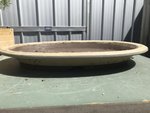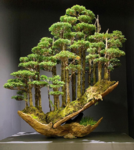Choose a drill bit slightly larger than the buds on your donor shoot. Having a big hole means it will take longer to knit...
Start drilling at the exit side of your intended graft point as opposed to the entry point, so drill in the OPPOSITE direction that the shoot will be passed through the tree. The reason is that when the drill bit breaks through to the other side it'll bust up the bark a lot more. I apply a few inches of sticky tape at this point to try and minimize it.
Drill slowly with thought about the angle you want your shoot to emerge on the other side.
When the hole is done, use a bit of wire to clean it by inserting it right through a few times to the other side & clear any sawdust and check that nothing is catching.
Pass the shoot through slowly and don't force it. If you break the buds or shoot it's a goner so if you find too much resistance carefully back it out and reinsert the drill then reclear with wire again.
When the shoot is free on the other side try and pull it through so you have as much shoot as possible on graft side without forcing it. It'll be stronger and thicken faster. Ensure this shoot has MAXIMUM sun. Don't put it in the shade of a branch above for example. You can gently wire it for shape and to get it in a sunny position.
If there's a big gap use a wedge (a shoot pruning off your larch will do) to force the donor shoot up against the top of the hole. Be very careful when you cut the excess of the wedge shoot off that you don't cut your donor shoot too. It's easily done.
Leave a bud very close to the hole, just past where you will apply a PUTTY sealer around both shoots and around the hole to stop the ingress of water into the hole itself. Don't use liquid sealer - it could run and interfere with the graft.
Once it's done remove all buds on the donor shoot that's not needed with scissors or rub them off gently, ie those before the entry point of the shoot. All energy should be focused on the exit side buds.
Lastly, leave the shoot to grow untouched all year so NO PRUNING. We want max foliage mass on the exit side to thicken it up!
A few clues on when to separate. The exit side of the shoot should appear at least double the thickness of the entry side. This means that the shoot is getting fed from the graft site as well as from the donor branch. Secondly, the callus and thickening should start pushing away the putty. You'll see the base of the donor branch as it exits the hole start to spread.
When I'm 100% sure it's taken (if in any doubt wait - this might take 2 seasons) I usually nick the shoot just before it enters the hole. Wait a week, nick it some more and over a month cut it off completely. This gradually weakens its reliance on the exit side for nourishment and strengthens the exit side.
Good luck

please post back if you want more details about specific points.










